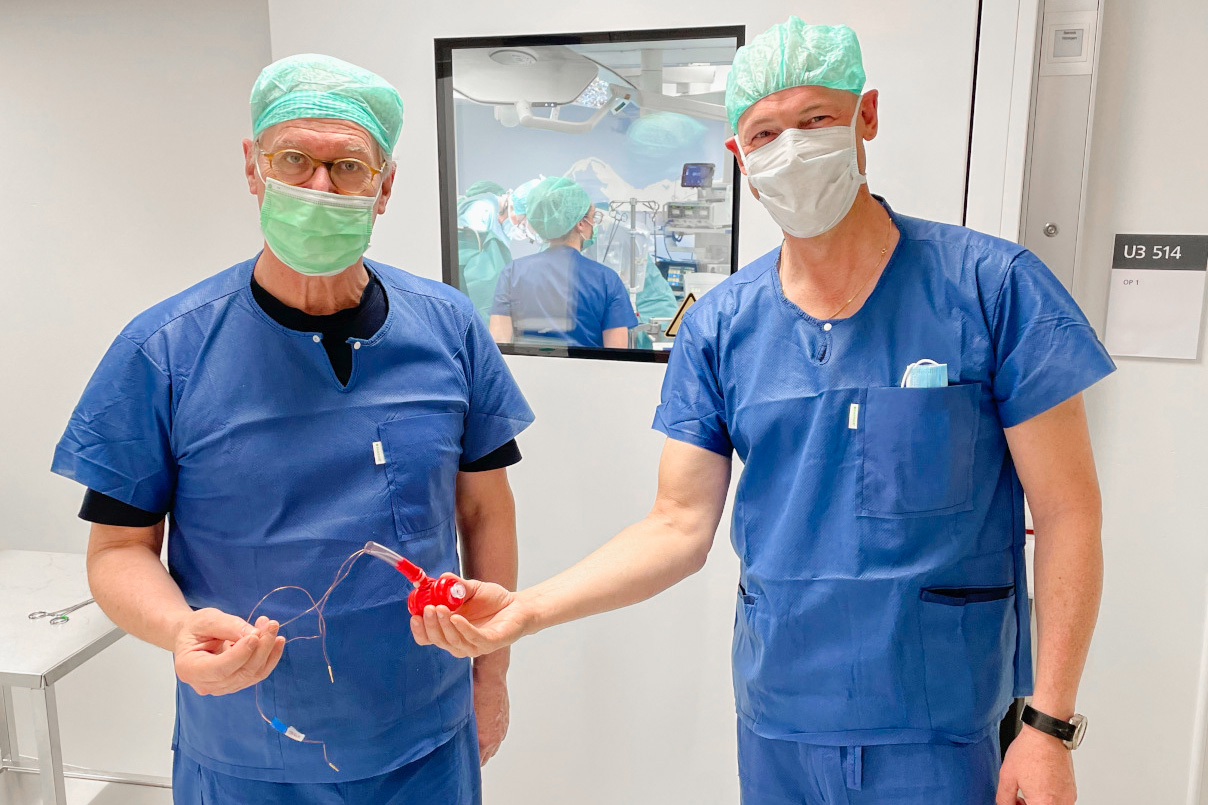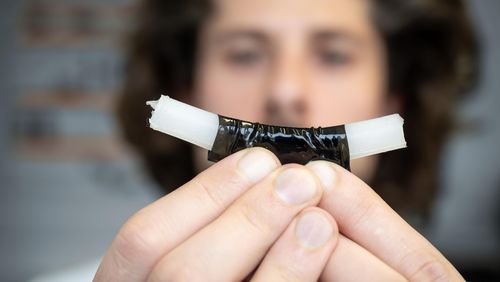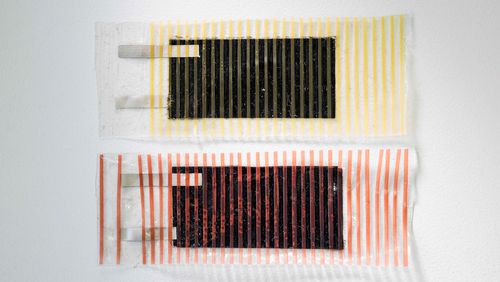
Artificial muscle successfully implanted in a pig
After the surgeons implanted the artificial muscle in the heart of a pig, the animal’s diastolic pressure dropped by a good five percent, resulting in a marked improvement in blood circulation. The positive outcome confirms that the project’s basic assumptions are correct and that the emerging technology bears enormous potential.
The next steps in the project are designed to take even more pressure off the heart: in addition to optimising the system and increasing pumping capacity of the artificial muscle, the researchers will focus on a way to realise a wireless charger that functions via the skin. Additional experiments on animals are planned for 2021, which will be carried out at the university hospitals in Zurich and Munich.
Giving the heart a hand
The newly developed “heart-helping” artificial muscle belongs to the category of Ventricular Assist Devices (VAD). The muscle is “installed” directly behind the aortic valve. When connected to an electric current, the device expands, similar to the natural motion of the aorta. And when the current is switched off, the device contracts again. The VAD is steered by waves of electrical impulses generated by the heart itself.
Because the VAD functioned so reliably in computer simulations, award-winning Swiss cardiac surgeon Thierry Carrel wanted to validate it in animal experiments as soon as possible. In February 2021, Thierry Carrel left his former position as head of department at Inselspital Bern and professor at the University of Bern after twenty-five years to take on a new role at the University Hospital Zurich. There he is charged with restoring the national and international reputation of the department of cardiac medicine in addition to promoting research and fostering the professional development of young medical staff.
New applications
The ethics commission of the Canton of Bern has given the go-ahead for the planned animal experiments at the Department for Biomedical Research at the University of Bern. Project leader Professor Yves Perriard from the Center for Artificial Muscles is satisfied: “We’re extremely pleased that we can test our VAD on pigs already in 2021.”
The devices are ready, and the surgeons can extensively practise the new, minimally invasive surgery techniques made possible by the artificial muscle. Surgeon Thierry Carrel says, “This is also an important step in further developing the artificial muscles for other surgical uses—for instance, for plastic and reconstructive surgery, urology or abdominal surgery.”
Indeed, the mission to create an artificial muscle has made such great advances over the past four years that the researchers are now turning their attention to ways of using artificial muscles to restore facial expressions to accident patients or to strengthen the urethral sphincter in cases of urinary incontinence.
The CAM researchers are now beginning work on these applications. Nevertheless, Yves Perriard says it will be a while before the artificial muscles are ready for general medical use: “It will take at least ten years before people can benefit from the development.”
Links
> Artificial muscles research project
> Center for Artificial Muscles (CAM)
> Thierry Carrel, cardiovascular surgeon
> Department of Cardiology, University Hospital Zurich (in German)
> Avoiding transplantations thanks to an artificial aorta, healthcare-in-europe.com, 5 February 2021 (in German)



